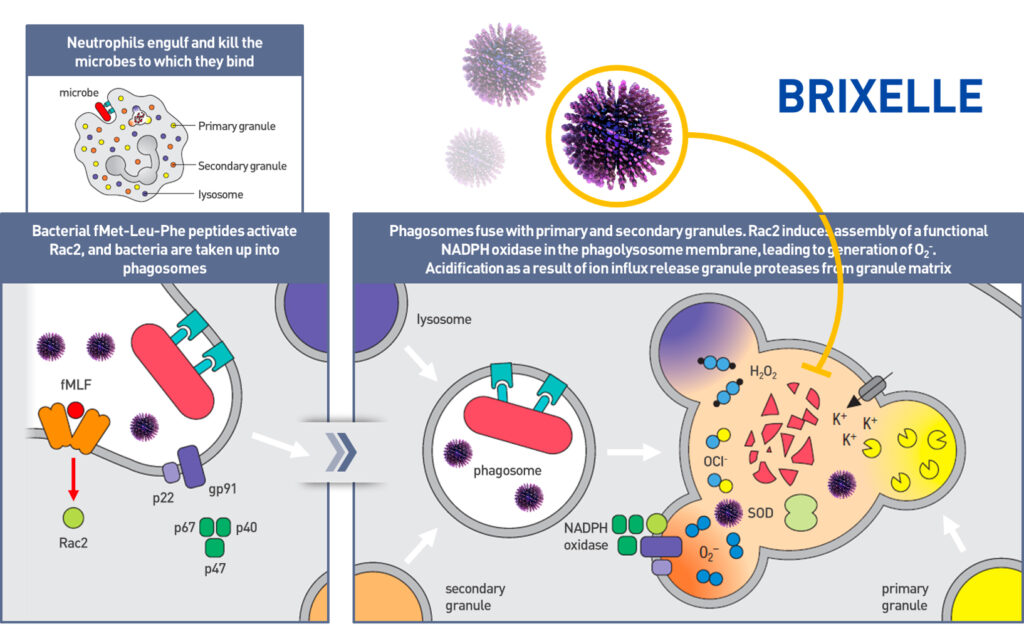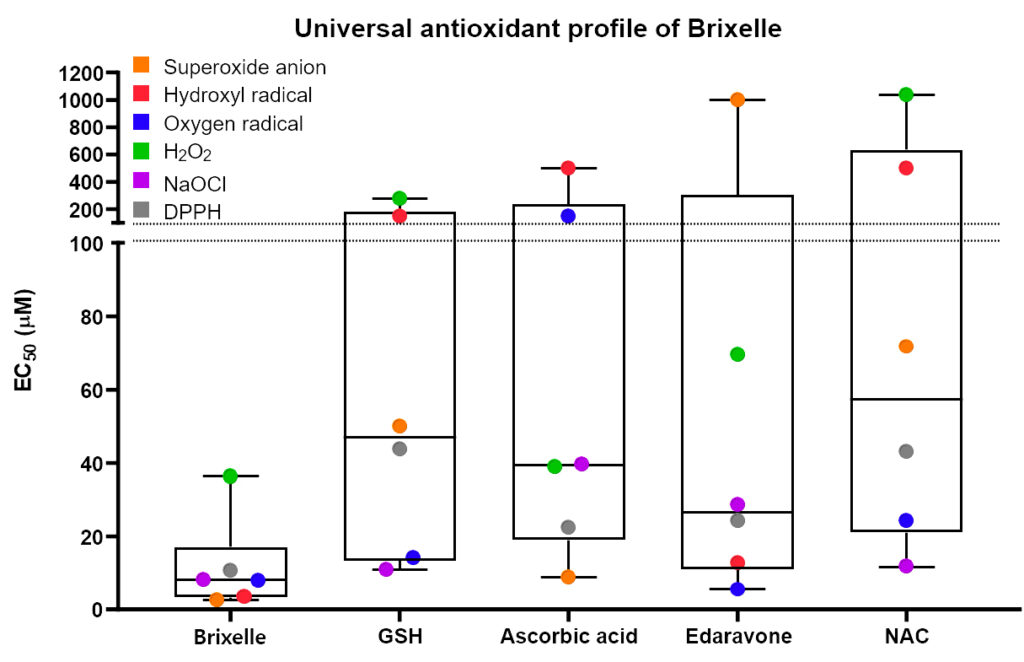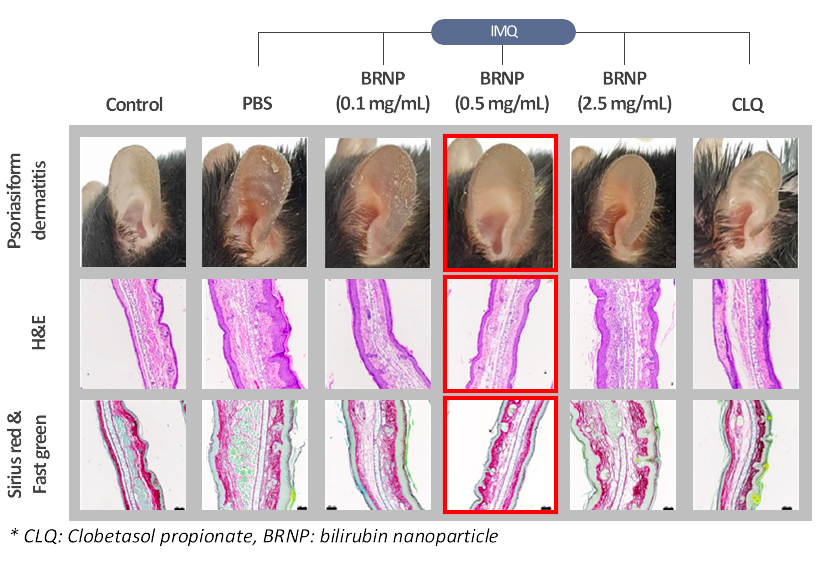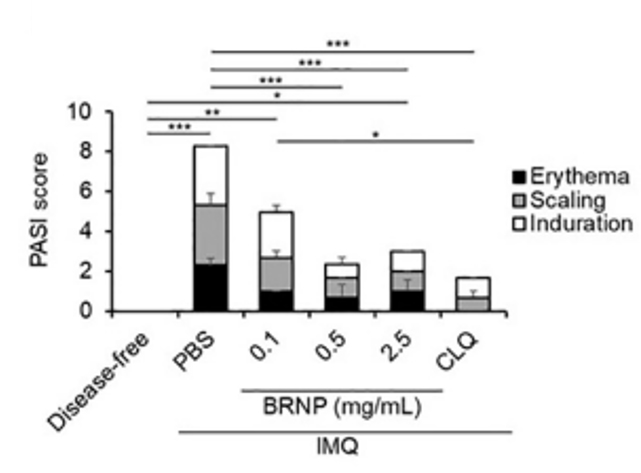Many inflammatory diseases are associated with reactive oxygen species(ROS) in the body. The bilirubin nanoparticle has strong antioxidant, ROS scavenging, and immune modulating properties which effectively eliminate the disease-causing ROS.
Mode of Action: Scavenging phagosomal ROS in APC

Bilirubin nanoparticles have higher therapeutic effects as it can scavenge ROS at the actual site of inflammation due to Enhanced Permeability and Retention (EPR) effect.
Once the bilirubin nanoparticles react with ROS, it breaks down into PEGylated biliverdin which is completely water soluble as an individual molecule and excreted out of the body easily.
The therapeutic effects of bilirubin nanoparticle has been shown in 9 different acute and chronic disease animal models such as myocardial infarction ischemic reperfusion injury, inflammatory bowel disease, asthma, ischemic reperfusion injury in organ transplantation, GvHD, psoriasis, multiple sclerosis, and other inflammatory related diseases.
Universal antioxidant profile

This figure shows that the bilirubin nanoparticles (Brixelle) can be developed as a psoriasis drug, such as clobetasol propionic, a conventional psoriasis treatment. Although the immune response to psoriasis and atopic dermatitis is different, considering the MoA of Brixelle, Brixelle is expected to be effective in both diseases.
Effects on inflammatory skin disease (psoriasis)


This figure shows that the bilirubin nanoparticles (Brixelle) can be developed as a psoriasis drug, such as clobetasol propionic, a conventional psoriasis treatment. Although the immune response to psoriasis and atopic dermatitis is different, considering the MoA of Brixelle, Brixelle is expected to be effective in both diseases.
J Control Release. 2020;325:359–369.